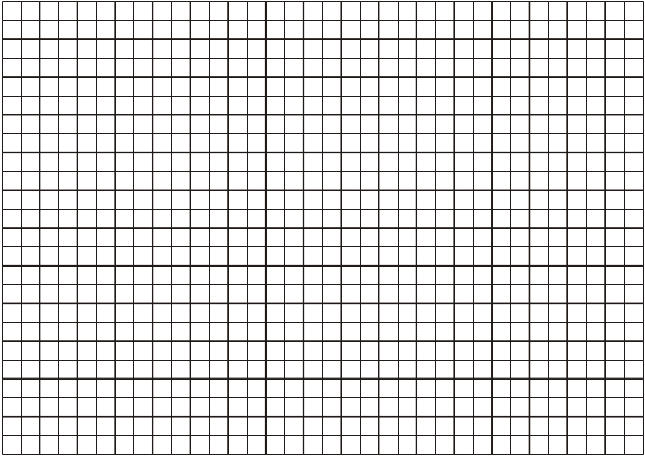
- •Module ііі. Physics of oscillations and waves. Optics
- •Study of stationary waves properties. Determination of frequency of string oscillations
- •Interference of light. Determination of lens curvature radius and light wavelength using Newton's rings
- •Table 4
- •Module IV. Quantum and atomic physics
- •Table 2
Table 4
Ring number, k |
Mean value of lens curvature radius Rave, m |
Air
clearance
thickness
|
Half-wavelength
amount,
|
1 |
|
|
|
2 |
|
|
|
3 |
|
|
|
4 |
|
|
|
5 |
|
|
|
6 |
|
|

Conclusions
![]()
The data of laboratory work fulfilment
Pass mark Signature
M ark
of laboratory work defence
Signature
ark
of laboratory work defence
Signature
questions to be admitted for doing laboratory work and its defending
What is phenomenon of light interference? What is the condition for observing light interference?
Wright down max and min conditions of light interference.
What are optical path difference and phase difference? What is connection between them?
What waves are called coherent?
What ways of coherent waves obtaining do you know?
How are coherent waves received in this laboratory work?
Why is the interference pattern observed as rings in this laboratory work?
Deduce formulae to determine R and λ.
How does the radius depend on wavelength and curvature of lens?
Why are the radii diffused?
Why is the dark spot in the centre of the pattern observed?
What do we observe when the optical system lights by daylight?
What rays are interfered for Newton’s rings formation in transmitted and reflected light? Draw the ray path.
What are “fringes of equal thickness” (isopachic fringes) and “fringes of equal inclination” (isoclinic fringes)?
In what case can we observe a bright (white) spot in the centre of the interference pattern?
Where are interference rings arranged more compact: in the centre or in the periphery and why?
Why does the interference pattern disappear with increasing the distance between the plate and lens?
LABORATORY WORK
DIFFRACTION OF LIGHT. DETERMINATION of WAVELENGTH OF MONOCHROMATIC LIGHT USING DIFFRACTION GRATING
-
The purposes of the work:
to determine diffraction grating constant and its resolving power
Devices and accessories:
1. diffraction grating;
2. laser;
3. screen with squared paper
Task 1. Diffraction grating constant determination
Determine positions of diffraction maximums using scale on the screen. Enter the results into table 4.
Calculate distances between diffraction maximums as the difference between left and right readings. Enter the results into table 1.
Calculate diffraction grating constant according to the formula:
![]()
Calculate average value of diffraction grating constant:

Enter the results into table 1.
Table 1
Exp. No |
Maximum order, k |
Left reading, m |
Right reading, m |
Distance between maximums xk, m |
Average value of distances between maximums, xkave, m |
Distance to the screen L, m |
Diffraction grating constant, m |
|||
d |
dave |
d |
, % |
|||||||
1 |
1 |
|
|
|
|
|
|
|
|
|
2 |
|
|
|
|
||||||
3 |
|
|
|
|
||||||
2 |
1 |
|
|
|
|
|
||||
2 |
|
|
|
|||||||
3 |
|
|
|
|||||||
3 |
1 |
|
|
|
|
|||||
2 |
|
|
|
|||||||
3 |
|
|
|
|||||||
— Calculate the random deviation of every value from mean value according to the formula:
![]()
— Determine root-mean-square deviations according to the formula:

— Calculate the absolute error of diffraction grating constant determination according to the formula:
![]() .
.
where the Student’s coefficient is tSt = 2,57 (k = 3 and = 0,95).
— Determine the fractional error of diffraction grating constant measurement according to the formula:
![]() .
.
Task 2. Diffraction grating resolving power determination
Calculate amount of grating grooves N and resolving power R of diffraction grating according to the formulae:
![]() ,
,
![]()
Enter the results into table 2.
Table 2
Spectrum order, k |
Diffraction grating width l, m |
Diffraction grating constant
|
Amount of grating grooves, N |
Resolving power of diffraction grating, R |
1 |
|
|
|
|
2 |
|
|||
3 |
|
Conclusions
The data of laboratory work fulfilment
Pass mark Signature
Mark of laboratory work defence Signature
questions to be admitted for doing laboratory work and its defending
What is the essence of light diffraction phenomenon?
What types of diffraction do you know? Give the definition of wave front. Formulate the Huygens-Fresnel principle.
What is the essence of Fresnel zones method?
What is the essence of diffraction by a narrow slit? Deduce the formula for maximum condition for diffraction by a narrow slit.
What is called diffraction grating?
Deduce the formula for diffraction grating
Draw the graph of light distribution intensity under the diffraction by a narrow slit.
What is the resolving power of diffraction grating?
What is the angular and linear dispersion of diffraction grating?
Why does diffraction grating resolve white light into spectrum? Draw diffraction spectrum of white light.
What is the difference between diffraction spectrum of incandescent and mercury lamps?
What are the advantages of diffraction spectrum devices in comparison with the one of prism?
What is the essence of spectrum analysis of X-rays?
How is the crystalline structure of body studied with the help of diffraction?
LABORATORY WORK
POLARIZATION OF LIGHT INVESTIGATION of PROPERTIES OF PLANE POLARIZED LIGHT
-
The purpose of the work:
- to study the method of plane polarized light observation with the help of polaroids;
- to test Malus law, observation of double refraction and interference of polarized rays
Devices and accessories:
1. optic bench;
2. two polaroids;
3. laser;
4. photosensitive device;
5. lens;
6. iceland spar crystal
Task 1. Polarized light testing
1.1. Rotating the analyzer from 0 to 3600 with the step of 100. Write down the readings of device Щ-4316 into table 1.
Table 1
Analyzer rotation angle, , grad. |
Device reading |
cos |
cos2 |
Analyzer rotation angle, , grad. |
Device reading |
||
amount of points |
A |
amount of points |
A |
||||
0 |
|
|
|
|
190 |
|
|
10 |
|
|
|
|
200 |
|
|
20 |
|
|
|
|
210 |
|
|
30 |
|
|
|
|
220 |
|
|
40 |
|
|
|
|
230 |
|
|
50 |
|
|
|
|
240 |
|
|
60 |
|
|
|
|
250 |
|
|
70 |
|
|
|
|
260 |
|
|
80 |
|
|
|
|
270 |
|
|
90 |
|
|
|
|
280 |
|
|
100 |
|
|
|
|
290 |
|
|
110 |
|
|
|
|
300 |
|
|
120 |
|
|
|
|
310 |
|
|
130 |
|
|
|
|
320 |
|
|
140 |
|
|
|
|
330 |
|
|
150 |
|
|
|
|
340 |
|
|
160 |
|
|
|
|
350 |
|
|
170 |
|
|
|
|
360 |
|
|
180 |
|
|
|
|
|
|
|
Plot the graph of the function
 in polar coordinate.
in polar coordinate.

Task 2. Malus’s law testing
2.1. Determine
the value of trigonometric function
![]() and
and
![]() using calculator from 0
to 90.
using calculator from 0
to 90.
2 .2.
Plot the graph of function I = f (cos2 )
for angles within intervals from 0 to 90°.
.2.
Plot the graph of function I = f (cos2 )
for angles within intervals from 0 to 90°.
Task 3. Double refraction observation
3.1. Obtain the first bright spot on the screen turning analyzer. Write down the angle according to the analyzer scale:
![]() = __________.
= __________.
3.2. Obtain the second bright spot on the screen turning analyzer. Write down the angle according to the analyzer scale:
![]() = __________.
= __________.
3.3. Determine angles difference:
![]() = __________.
= __________.
Conclusions
The data of laboratory work fulfilment
Pass mark Signature
Mark of laboratory work defence Signature
q uestions to be admitted for doing laboratory work and its defending
What is the difference between natural and polarized light?
What types of polarized light do you know?
What are polarization plane and oscillation plane?
What methods of polarized light obtaining do you know?
What are polarizer and analyzer?
What is the principal plane of crystal?
What is the difference between the ordinary and extraordinary rays?
What is the Nicol prism?
Give definition of Malus low.
What is the essence of double refraction?
What is the essence of Kerr effect?
What is the essence of the polarization plane rotation?
What are the conditions for interference of polarized rays observation?
What are the min and max conditions of polarized rays interference?
Q UESTIONS
FOR CURRENT TEST PAPERS AND MODULE CONTROL
UESTIONS
FOR CURRENT TEST PAPERS AND MODULE CONTROL
(theoretical information)
Free harmonic oscillations. Differential equation of free harmonic oscillations.
Equation and characteristics of free harmonic oscillations.
Addition of two oscillations of same frequency in a straight line. Vector diagram method.
Addition of two oscillations with nearly equal methods. Beats.
Addition of two oscillations acting at right angles. Lissajous figures
Damped oscillations. Differential equation of the free damped oscillations and its solution.
Damped oscillations characteristics: Damping factor, damping decrement, logarithmic damping decrement quality factor.
Forced oscillations at periodic force action. Amplitude and phase of forced oscillations. Resonance.
Free electromagnetic oscillations.
Damped electromagnetic oscillations.
Forced electromagnetic oscillations
Waves. Transverse and longitudinal waves. Wave equation.
Phase and group wave velocities.
Elastic wave energy.
Stationary waves.
Doppler’s effect for sound and electromagnetic waves.
Electromagnetic wave. Wave equation and equation of wave. Wave characteristics.
Electromagnetic wave energy.
Electromagnetic wave radiation.
Light waves properties.
Interference of light. Light waves coherence.
Phases difference. Optical path difference. Relationship between them.
Methods of coherent waves getting: Young’s splits, Fresnel’s bemirror, Fresnel’s biprism.
Interference in thin films.
Newton’s rings.
Practical application of light interference.
Diffraction of light. Observation conditions.
Hugence principle. Hugence-Fresnel principle.
Fresnel’s zone.
Fresnel’s Diffraction at circular aperture.
Fresnel’s Diffraction at dense disk.
Diffraction of plane light waves at single slit.
Diffraction of plane light waves at diffraction grating.
Practical application of light diffraction.
Polarization of light. Types of light polarization.
Polarized light getting. Brewster’s law.
Polarized light getting using anisotropic crystals.
Polarized light properties: Malus’ law, polarized light interference.
Artificial optical anisotropy. Kerr’s effect.
Dispersion of light. Types of dispersion.
Dispersion of light. Rayleigh’s Law.
Absorption of light. Burger—Lambert—Berr Law.
